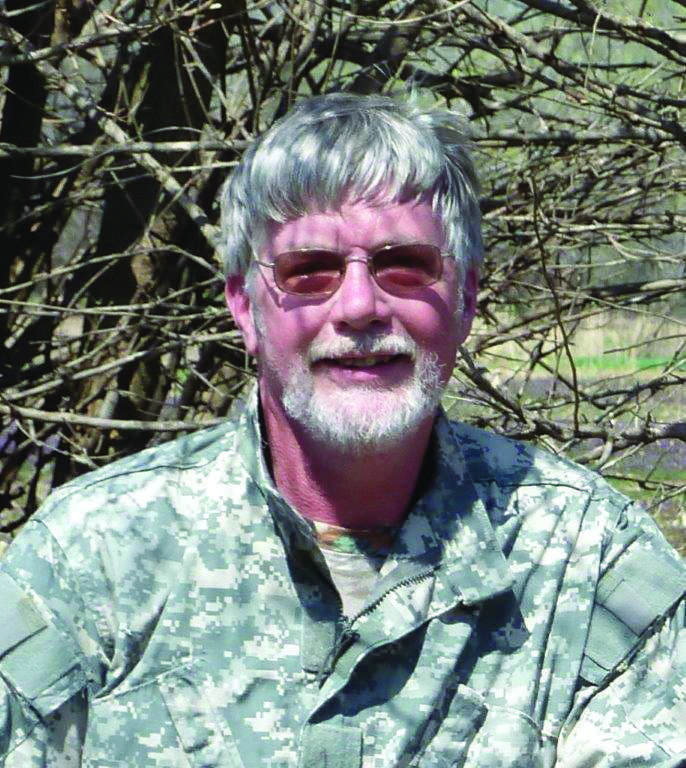I love watching hawks hunt and I love observing how they’ve learned to interact with farm equipment as it rolls across fields and stirs up rodents and small birds that scurry about and often end up as a snack for the hawk. Our raised deer blind overlooks a grass waterway that grows up in giant sunflowers and pigweed by summer’s end, becoming a nice secure travel way for deer, but making them hard to spot during hunting season. I try to mow that area every fall, and every year as I mow the last swath of thick weedy cover, fat field mice scatter everywhere and I think to myself “Man could the hawks be feasting here.” A few years back I happened by a nearby field of soybeans being cut. What caught my eye was the enormous number of hawks all around the field; I counted to thirty-some then lost count. I rolled into the field and talked with one of the combine drivers about the hawks. He said they had suddenly appeared as if from nowhere when they started cutting and had been there since. The soybean plants were extra tall and thick that year, and as they ripened and dropped their foliage, it left several inches of duff covering the ground between the rows; perfect cover for field mice and rats looking for warm concealment. As the combines lumbered through the field, they forced all those rodents from their cozy quarters and the hawks were feasting.
We’re already starting to see an extraordinary number of hawks of all varieties as they migrate south toward warmer climates. The extent of our Kansas winter will largely determine whether they stay here for a spell or move on south, and our milder-than-normal winters of late have been a huge draw to migrating hawks. The hawks I observed hunting the soybean stubble field that year were obviously migrants that were getting a good meal whether they stayed or not. The vast acreages of new wheat fields will be a huge draw too, as mice, voles and insects become vulnerable to the hawk’s keen eyes in the short new wheat. Another plus is the type of air currents and thermals that blow through the plains states. North winds coming down from Canada are utilized by all types of hawks, saving them precious energy by being able to soar. So in summary, the mild winters, the open fields and the beneficial wind currents all make Kansas a popular place to see hawks of many varieties this time of year.
One common hawk we see here every winter is the Northern Harrier. They are large hawks with wide white bands across their broad square tails and are often seen gliding effortlessly mere feet above CRP fields and pastures. We also get an influx of Red Tails from northern states as they come here for our milder winters. Swainson Hawks on their way to Argentina stop in Kansas by the thousands. Rough-Legged Hawks migrate from Canada to the western US, including Kansas. Ferruginous Hawks may be seen here as they travel from Western Kansas to parts of the South Eastern US and to Florida. All these truly make for a kaleidoscope of raptors in our Kansas sky.
This article wouldn’t be complete without emphasizing the important role raptors play in our agricultural environment. Raptors get blamed for everything from low pheasant and quail populations to stealing chickens and everything in between. Yes, we all know that hawks and especially owls will steal a chicken or two given the chance, but in actuality, hawks prey on mice, rats, snakes and possums that eat quail and pheasant eggs and newly hatched young. (FYI, feral and stray cats are the worst predators alive for killing young game birds and song birds.) Owls are huge rat and mice hunters and also eat skunks that
carry rabies. If not for these raptors in our midst, rodent populations would devastate farmer’s crops and our environment as a whole. And for the record, killing a raptor of any kind is illegal in Kansas!
You can’t go afield this time of year without spotting hawks silently hunting low over patches of CRP and milo stalks, waiting patiently atop power poles for prey to reveal themselves or putting on shows of acrobatic excellence as they soar above us on the fall breezes. I once overheard a raptor rehabilitator tell someone “We as humans have encroached on them, so the least we can do is let them live with us.” Continue to Explore Kansas Outdoors!
Steve can be contacted by email at [email protected]





